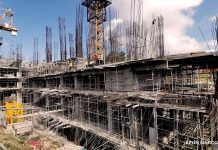Bangko Sentral ng Pilipinas Governor Nestor A. Espenilla Jr. expects the Philippine peso to stabilize in the coming days since the local unit has somewhat recovered.
The local currency has shown some improvements against the greenback in recent days but finished last week at 51.49, near its 51.60 close on Aug. 24, 2006, given the suspected terror attack in Spain last week.
Espenilla, in a message to reporters Monday, said performance of the peso had been cited by some commentators in their assessment of the Philippines’ economic situation, which he stressed should not be done.
He said comparing the local unit against stronger currencies in the region “is a rather simplistic way to look at it.”
“Rather, the better way to gauge the economy is to evaluate its progress toward delivering on things that ultimately matter to the people – low inflation, growth, and jobs,” he said.
In the first seven months of the year, inflation averaged at 3.1 percent, which was within the government’s two to four percent goal for 2017 until 2020.
Growth, as measured by gross domestic product (GDP), averaged at 6.4 percent in the first half of the year, near the lower end of the government’s 6.5-7.5 percent target for the year.
Employment rate as of end-April this year stood at 94.3 percent, higher than year-ago’s 93.9 percent.
Espenilla pointed out that “each economy faces its own unique challenges,” thus policies that were put in place are specifically targeted to “suit its circumstances and needs.”
“The Philippines is doing the correct thing in prioritizing a more investment-led economic growth. Allowing the peso to depreciate gradually to a more appropriate level is fully consistent with that strategy,” he said.
Foreign exchange rate in the Philippines is market determined although monetary officials have repeatedly said that the central bank joins the market but only to address extreme volatility in the exchange rate.
The central bank chief said “the BSP is very mindful” on the economic changes in the country since these “may create market uncertainty if not well explained.”
“So we communicate and explain,” he said.
Espenilla also noted that “speculators may want to take advantage by exaggerating for financial gain an otherwise healthy price correction to recover some of the price competitiveness.”
He, however, stressed that the central bank “will not tolerate such speculative behavior and stands ready to use its very ample international reserves and deploy its full policy and regulatory arsenal if necessary.”
“In any case, we think that the peso has now sufficiently adjusted and can be expected to regain relative stability going forward. This soft landing is reinforced by effective discipline in fiscal management and a well-designed and well-executed public investment program,” he said.
“Pursuing a flexible and adaptive exchange rate policy enables the BSP to keep its interest rate policy settings squarely focused on achieving the inflation target while dampening consumption and supporting a more investment- and export-led growth that the economy needs to sustain its strong momentum over the long haul,” he added. (PNA)






